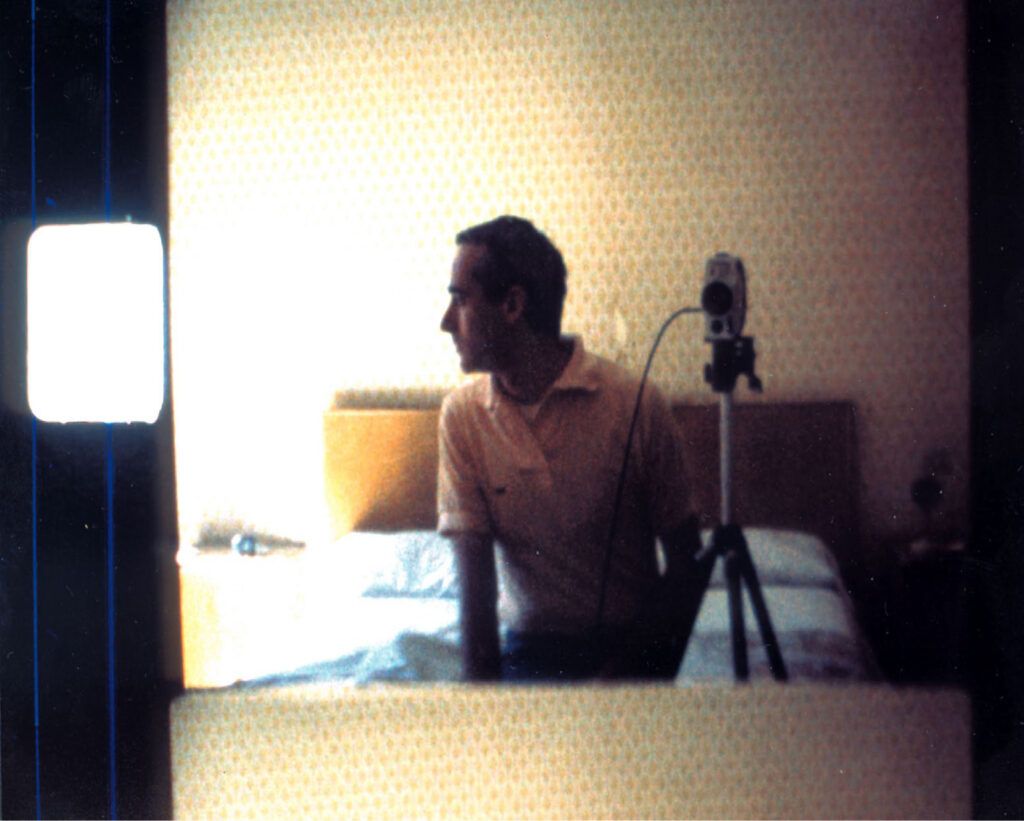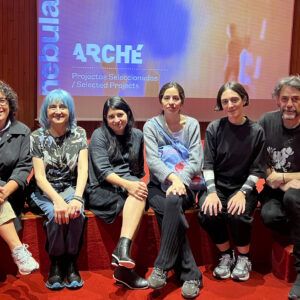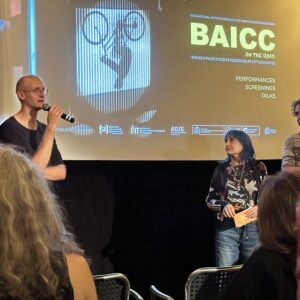On the occasion of this 12th edition, (S8) brings to us an illustrated lecture by Jean-Claude Rousseau, during which the French filmmaker will present and analyze a selection of films that connect with his own works in different ways –pieces by Vigo, Duras, Akerman, Snow, Frampton, and Martedi. This activity was designed as part of a program curated by Francisco Algarín Navarro and Carlos Saldaña –a touring initiative that has been on show at different locations in Spain and is now hosted by Filmoteca de Galicia. Down below you’ll find an excerpt (take it as an appetizer before the lecture) from one of the two books that Algarín and Saldaña wrote about Rousseau this year via Lumière: La luz reflejada a través de las cosas. Conversaciones con Jean-Claude Rousseau, in which the French author looks into his first steps as a filmmaker.
What was the moment when you tried a super 8 camera for the first time?
When I was a teenager, my parents bought a super 8 camera. I might have pushed them to do so… It was used mainly for making the kind of family films you do when you go on holiday somewhere. Of course, those reels might be somewhere in the house, but I haven’t seen them recently. Super 8 cameras were usually sold to families; they were mainly used for creating souvenirs of family trips. It’s with this camera my parents had bought, a Bauer D2M –already aware of its limitations and lack of precision when it comes to framing, which needed to be corrected–, that I filmed my five super 8 pieces. It became a family thing, not only because that was the origin of the camera. I had already used it by the Seine with the purpose of making a film. It’s very probable that I had watched Aurélia Steiner by Marguerite Duras. However, when I saw the result, I found it uninteresting. I immediately realized that wasn’t the right way to film. But the idea of “cinema” was present there. Then, there’s the footage I filmed in Sousceyrac, my mother’s natal region, where there’s an old inactive mill and a water reservoir in front of the house. There, I filmed the two reels that would later be spliced into La Vallée close. They depart a little bit from the general idea of the film, but I think the film needed them. However, this happened long before I developed a relationship with images and discovered what I could make with that camera.
Also, all your super 8 pieces were filmed using Kodachrome 40 reversal film.
Looking at your remark, one might think that I chose among several available films: Kodak, Fuji, etc. No. I once used film (Fuji) that offered rather cold hues. Kodachrome, on the other hand, allowed me to obtain warmer colors, which suited my project. But I didn’t choose the film consciously thinking: “This brand will make the colors warmer.” I mean, I realized it in the end, but it wasn’t a conscious choice. The fact that the laboratory sent back a positive instead of a negative also made things simpler. It’s in these conditions that I filmed my first super 8 takes, which ended up in the film Jeune femme à sa fenêtre lisant une letter. The material wasn’t the best and nor were the technical procedures… But even without all this, we can still create admirable things (in spite of ourselves, in a way).
You lived in New York in times that were historical for cinema.
Yes. My trips to New York started back in 1973. That year, I went there to reunite with someone I had met in Athens. I knew that person lived in Manhattan, I had their address, but when I came to their door… I learned they weren’t living there anymore. A year later, another encounter in Paris led me back to New York. I traveled to New York on several occasions in 1974 and 1975. Those were short stays, but they were frequent, and they took place during school holidays (I was a teacher at the time). In 1976, I left Paris and moved there. I came back in 1977. My first contact with New York left a strong mark on me: it was 1973, I had traveled alone, it was the summer, and I got off the bus from the airport to Manhattan, to the (back then) dangerous neighborhood of 42 street. Anyhow, that released some kind of energy and, among other things, encouraged the desire to do something related with the so-called visual arts. I was into cinema, of course. I saw Dominique Noguez in New York on the occasion of the premiere of Chantal Akerman’s Jeanne Dielman at MoMA’s theater, although I had probably met him when I lived in Paris.
What other films were you able to see in New York?
At the time, New York was boiling with the underground film scene that had grown around the Jonas Mekas cinematheque. I used to attend the film screenings. I might have watched Andy Warhol’s films at the Anthology. I’m almost positive that the first Michael Snow’s film I watched, also at the Anthology, was Wavelength. There’s a film by Snow (Presents) that I really like, but it’s not from the 70s. When the Cinemateca Portuguesa curated a retrospective of my film work, I decided to include this film in the carte blanche. Presents has two parts. In the first part, the action takes place before a wall. At a certain point, the wall collapses, allowing us to see what is behind: the sky and the rooftops of the great buildings. The set begins to shake, the trinkets on the furniture and the very furniture begin to shake and eventually fall down. We see a young woman that struggles to move. It required a complex technical installation: the set was on top of a structure that could be moved and relocated, which reminds me of the ending of Fellini’s E la nave va, where the décor is revealed and we see the technical team that create the movement of the ship. We see the same thing at the end of Manoel de Oliveira’s Benilde ou a Virgen Mãe, in backwards traveling that lets the viewer see the set. In New York, around 1976-1977, I saw for the first time, at the Japan Society, a film by Yasujirō Ozu before the retrospectives they organized in France and which became a memorable event –there I saw Alain Resnais standing in front the Max Linder theater because the tickets sold out.






